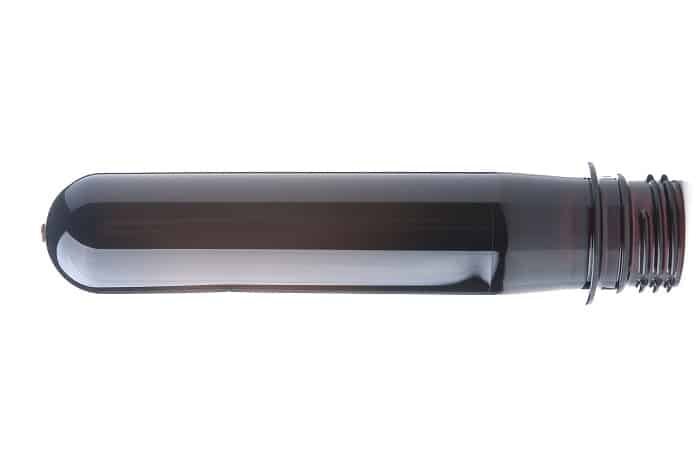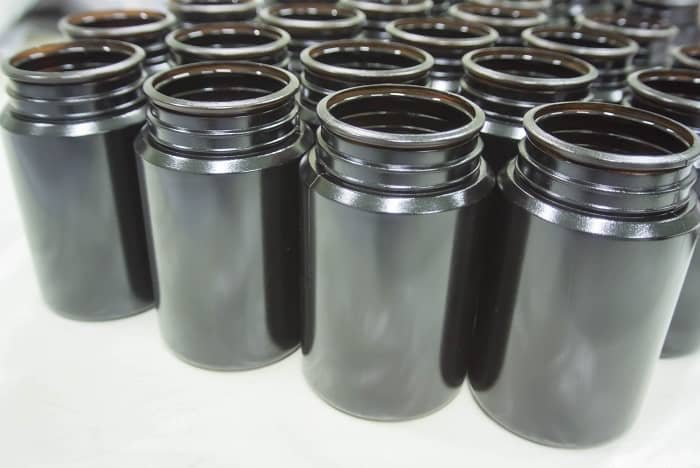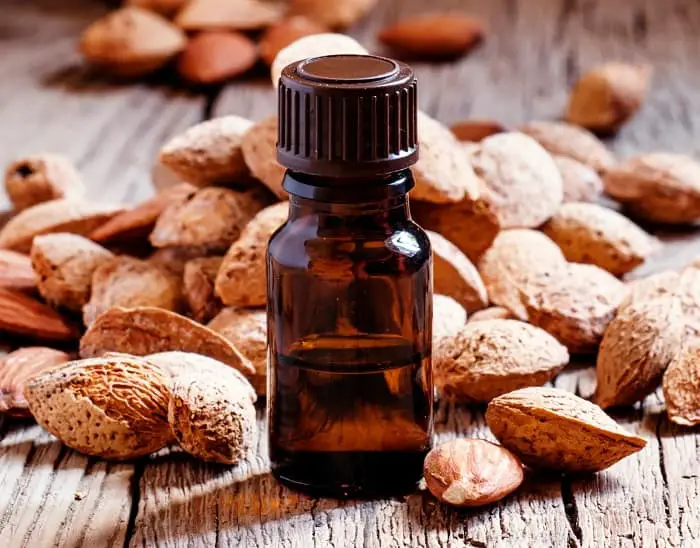Last Updated on October 17, 2024
I’ve been using essential oils mainly due to their aromatic and therapeutic properties. As I go about sharing tips and knowledge I have learned about essential oils, one of the questions I get asked often is which container to use for storing them.
Generally, essential oils should be stored in airtight containers, mostly ones that are made of glass. However, you might be surprised to learn that you can also use a plastic container for storing your oils.
It’s not just any other plastic bottle though. There are specific types of plastic that are considered safe and suitable for storing essential oils.
Table of Contents
What Type of Plastic is Safe for Essential Oils?
There are seven types of plastic depending on the materials used to create it. However, only two of the seven are considered safe for storing your essential oils. They are the following:
Plastic #1 (PET or PETE)
Polyethylene terephthalate, commonly known as PET or PETE, is a type of plastic which is commonly used for making soda or water bottles. Since no known health issue regarding the use of this plastic has been discovered yet, this makes it safe for containing food items, even essential oils.
 However, it’s designed for single use only when storing food items and drinks. It’s mostly recycled and manufactured into new bottles or other items like clothing, textiles, beverage containers, and more.
However, it’s designed for single use only when storing food items and drinks. It’s mostly recycled and manufactured into new bottles or other items like clothing, textiles, beverage containers, and more.
If you plan to store your essential oils in a PET plastic bottle, make sure you look for the logo with the #1 print on the bottom.
Plastic #2 (HDPE)
Just like PET, high-density polyethylene or HDPE is also a type of plastic which is deemed safe for storing food and drink items, and the same can be said for essential oils. So far, HDPE is not known to transfer any chemicals into the stored food or drink items according to Chemical Safety Facts. This makes it a really ideal choice of storage for your essential oils.
In general, HDPE plastics are used for manufacturing shampoo bottles as well as milk and water jugs. You can distinguish a container made of HDPE plastic by looking for the #2 print on its bottom section.
PET vs HDPE: Which is Better?
PET plastic bottles have a maximum temperature resistance of 131 degrees Fahrenheit, preventing the stored essential oil from deteriorating or evaporating due to too much heat. However, this would depend on the type of essential oil you are storing.
Cold-pressed oils like bergamot, lemon, orange, grapefruit, and tangerine can be easily damaged when exposed to temperatures exceeding 100 degrees Fahrenheit (38 degrees Celsius).
Meanwhile, HDPE plastic bottles have a higher heat resistance at 167 degrees Fahrenheit. Though they’re not as clear compared to PET bottles, they are still translucent enough to allow you to see its contents with ease.

Compared to PET containers, HDPE bottles can withstand colder temperatures, with a maximum cold resistance of -110 degrees Fahrenheit.
If we are to judge which is the better one, then I could say that there’s really not much of a difference between both except for their appearance and temperature resistances. PET plastics are generally transparent in nature and come in various colors. Meanwhile, HDPE is a lot more rigid and comes with better temperature resistance.
Extending the Shelf Life of Your Essential Oils
Now that you know what type of plastic is safe for essential oils, let’s now talk about how you can extend the shelf life of your essential oils and make sure their quality doesn’t deteriorate as much as possible.
1. Using the Right Container
While plastic bottles made of PET and HDPE are safe for use, bottles made of glass and steel are always the best and highly recommend options when it comes to storing essential oils. The reasons are as follows:
- Glass is ideal for making sure that your essential oils remain fresh. Also, there’s the fact that glass bottles are pretty easy to clean.
- Steel is impervious to essential oils and allows for better application control. They’re also invulnerable to breakage, especially when dropped accidentally.
- Bottles made from either glass or steel help prevent oxidation and deterioration which are a common problem among plastic containers.
2. Keeping Them Away from Heat or Direct Sunlight
As mentioned earlier, the quality of various essential oils can be affected when exposed to direct heat or sunlight. Therefore, whenever possible, you shouldn’t store your bottles containing essential oils to too much heat and sunlight.
This is because doing so will cause their chemical composition to change. There’s also the fact that too much heat could cause them to evaporate, thereby making them less effective. As much as possible, you want to keep your oils in a cool, dark place to extend their shelf life and preserve their quality.
Additionally, each essential oil has its own flashpoint which is a specific temperature where they start to ignite. Fortunately, most essential oils have a generally high flash point, and placing them at room temperature is enough to preserve their quality.
3. Storing Them in Airtight Bottles
Just like how exposing your essential oils can cause their quality to deteriorate, exposing them to air can cause them to oxidize. This can affect their aroma, consistency, and overall quality.

To prevent losing your essential oils to oxidation, it’s highly recommended to store them in airtight bottles which come with an airtight seal. Ideally, you want to use bottles with screw-on caps to make sure air can’t get in and out of the bottle as much as possible.
Final Thoughts
One final thing you should keep in mind when using plastic bottles is to dilute your essential oils first before storing them. Also, make sure you don’t use other types of plastics than the two which were previously mentioned.
Hopefully, you’re able to learn which plastic types are safe for storing essential oils. However, as mentioned, using either glass or steel bottles are highly recommended if you want to maximize the quality and longevity of your oils.
Have you tried using plastic bottles for storing your oils? If so, share your experience with us below. If you have questions, don’t hesitate to leave a comment as well. Thanks for reading!

Lacey is an environmental enthusiast and passionate advocate for living green and sustainable. She believes that everyone can make a difference, no matter how small. Lacey is dedicated to reducing her own carbon footprint and educating others on the importance of living greener. She is an advocate for green energy and sustainable practices. She is an active member of her local community, volunteering with local conservation efforts, and taking part in sustainability initiatives. Lacey is a firm believer that the only way to ensure a sustainable future is to work together and make small, but important changes.

